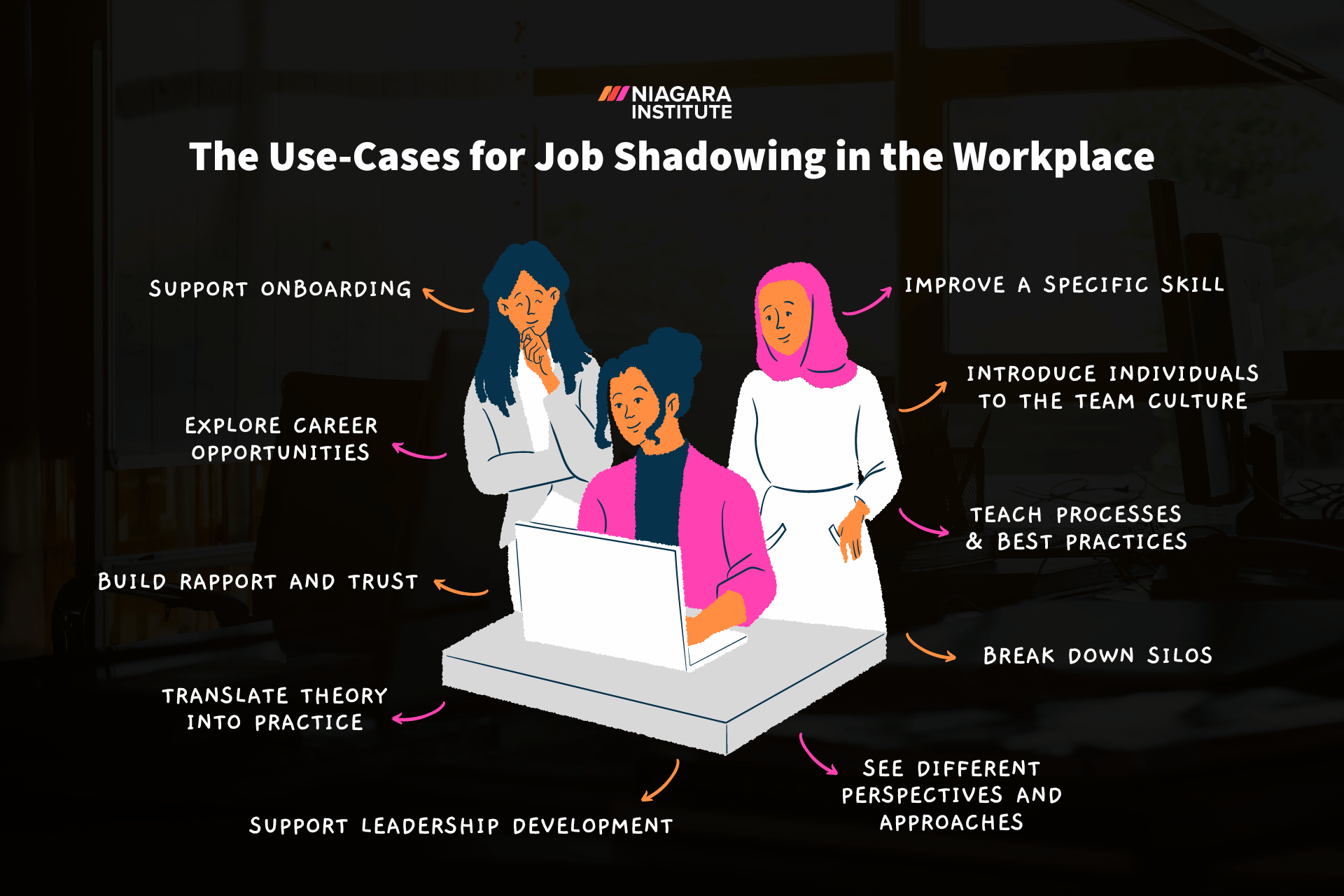5 min read
Is Job Enrichment the Answer to Lacking Employee Motivation?
“Forget praise. Forget punishment. Forget cash. You need to make their jobs more interesting.” This type of statement is one that you could easily...

As a leader, your job is to help your employees succeed in the position they are in today and prepare them for the roles they will take on in the future. In order to do that, you must support their development and provide them with adequate learning opportunities.
One popular learning opportunity in the workplace is job shadowing. But what exactly is job shadowing? When should it be used? In the following article, we’ll answer those questions and provide you with instructions on how to set up a job shadowing arrangement for your employees.
Job shadowing is a type of on-the-job training where individuals follow and observe a colleague or leader's day-to-day activities in the workplace. Typically, the purpose of it is to support a significant transition, such as onboarding, or to assist in the achievement of a specific goal on an individual’s development plan, such as getting promoted or learning a new skill.
The length of a job shadowing arrangement is typically between a few hours and a few weeks. However, it might be longer depending on the complexity of the goal, the availability of the person being shadowed, and the needs of the individual who is job shadowing.
Like training and professional coaching, job shadowing is a tool that can be used in a variety of situations to develop your employees, build their confidence, and unleash their potential. Most commonly, though, it is used for one or more of the following reasons:

Once you have identified an employee’s need for job shadowing, here is what you need to do to set it up for employees and ensure it achieves the desired goal.
The first step is to define the exact purpose of job shadowing. Why does your employee need it? What do you expect them to learn/take away from it? Why is job shadowing the best way to go about that? Once you are clear on the purpose, it will be that much easier for you to explain it to others and keep everyone aligned on the goals of the job shadowing throughout the process.
Next, approach all the relevant parties with the basic details, such as the time requirement and purpose, and secure their commitment. At this time, you should also loop in your HR or L&D team, if necessary, to see if they have any defined processes you should follow or ideas for how to make the arrangement a positive experience for all involved.
Once everyone has agreed for the job shadowing to occur, meet one-on-one with your employees to discuss what you would like this to achieve and co-create a few realistic goals. Not only does this give you a chance to get on the same page, but having goals will help your employee stay focused on the right things and give you something to hold them accountable to. Of course, this information should be shared with the person who is being shadowed so they can also keep it in mind during the process.
The next step is to set expectations between the involved parties, so there is no confusion or stress. For example, if you want the time to be spent doing tasks and in meetings versus a long-winded Q&A session, say so. If you have a specific timeline or topics you want to be covered, tell that to both parties. This is also when you can give the person being shadowed permission to push back the job shadowing temporarily if something urgent demands their full attention.
Before any job shadowing gets underway, ask the person being shadowed about their availability. While you might wish for the job shadowing to occur over several consecutive days, this might not be feasible. If that’s the case, work together to select days and times that do work and send out a schedule or meeting invites to formalize the arrangement.
If the job shadowing you are arranging takes place over several days or weeks, you should periodically check in with the person who is shadowing and the person being shadowed. Are they happy with their progress? Are they working well together? Have they encountered any difficulties? Can you support them in any way? By asking these questions along the way, you will ensure that the arrangement is on track to achieving its intended goal.
Once the job shadowing is completed, conduct a brief post-mortem with your employee and the person who was shadowed. Revisit the goals you set together at the beginning of the process and decide whether they were achieved. Also, look at updating the employee’s development goals and plan according to what was learned during the job shadowing process.
.png)
5 min read
“Forget praise. Forget punishment. Forget cash. You need to make their jobs more interesting.” This type of statement is one that you could easily...
.png)
5 min read
Over the course of your life, you have picked up habits, abilities, and skills that allow you to succeed in the workplace, regardless of what title...
.png)
8 min read
Leadership training is a two-way street. Not only do organizations need to be willing to invest time and money into training their leaders, but...